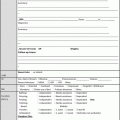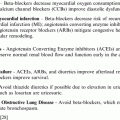Schedule
Medical use/effects
Abuse potential
Examples
I
• No medical use
• Research use only
Highest
Heroin, Marihuana, LSD, MDMA
II/IIN
• Severe psychic or physical dependence liability
• Narcotic, Stimulant, Depressant drugs
High
Narcotic: Opium, Codeine, Hydromorphone, Methadone, Hydrocodone
Non–narcotic: Amphetamine, Methamphetamine, Nabilone
III/IIIN
• Moderate or Low psychical or physical dependency
High
Narcotic: Acetaminophen with Codeine, Buprenorphine
Non-narcotic: Ketamine, Anabolic steroids
IV
• Limited psychological or physical dependency
Low
Chlordiazepoxide, Diazepam, Barbital, Phenobarbital, Clorazepate, Alprazolam
V
• Over the counter or prescription drugs with limited amounts of narcotics
• Used for analgesic, antitussive, antidiarrheal
Lowest
Buprenorphine, Propylhexedrine
Controlled (scheduled) drug prescribing is allowed for PAs in the majority of states through their collaborative practice with physicians. However, 15 states restrict this privilege to schedule III–V. Florida and Kentucky do not allow for any controlled substance to be prescribed by a PA. All states (except for Florida) allow NPs to prescribe controlled substances: the majority of states allow Schedule II through V; however, 8 states restrict this to Schedule III through V [8, 23].
The registration procedure with the DEA is the same for all Advanced Practitioners who are designated as “ mid–level practitioners ” by this agency. After successfully completing all requirements imposed by the state in which they will practice and successfully receiving a state license, mid-level practitioners are able to apply for a DEA registration via Form 224a. Subsequently they will receive a DEA number beginning with “M” [25].
There is a significant lack of PAs practicing in long-term care even though 20 % work in primary care. To date, it appears that PA schools have shown a propensity to fill gaps in orthopedics, urgent care, and in-patient care. Data has shown that PAs have a favorable attitude towards the elderly and would welcome incorporation of a rotation in long-term care during their training as a means to increase their knowledge in geriatrics [26].
Collaboration
How and when to develop Collaborative Practice Agreements is beyond the scope of this chapter; however, some general comments are important. Interprofessional team care is becoming the gold standard in long–term care. Within this concept, team members include physicians, Advanced Practice Nurses (NPs and CNS), and PAs. Currently NP and CNS can work independently (depending upon state regulations), whereas PAs at this time must work in collaboration with a physician. There are six models of care in collaborative NP/ physician practice at long-stay nursing facilities: collaborator, clinician, care coordinator/manager, coach/educator, counselor, and communicator/cheerleader [26, 27]. Combining these models of care can create synergy that rewards the physician, NP, residents, resident families, facilities, and staff. There are at least seven different forms of collaboration in practice which include (1) NP hired by the physician; (2) NP and physician both employed by the long-term care setting; (3) NP contracted (self-employed) or employed by an NP practice; (4) NP employed directly by the nursing facility; (5) NP employed by the payer (e.g., Optum); (6) NP in a specialty collaborative practice that includes consulting; and (7) NP in independent practice employs a physician [28].
It is encouraging to see the progress that has been made in acknowledging the crucial role that advanced practitioners play in the realm of long term care and geriatric practice. In 2014, AMDA—The Society for Post-Acute and Long-Term Care Medicine , House of Delegates, voted to permit full membership to NPs and PAs. This resolution allows NPs and PAs to stand for board positions and to contribute their expertise to improving patient care [29].
Resources for developing collaborative practice agreements can be found through professional organizations including AMDA—The Society of Post-Acute and Long Term Care Medicine (www.amda.com), the Gerontological Advanced Practice Nurses Association (www.gapna.org), the American Association of Nurse Practitioners (www.aanp.org), and American Academy of Physician Assistants (www.aapa.org).
Pearls for the Practitioner
Nurse practitioners and clinical nurse specialists are autonomous collaborative members of the interprofessional team in both post-acute and long-term care settings.
Nurse practitioners scope of practice ranges from state to state: full practice, reduced practice, and restricted practice.
Physician assistant scope of practice is determined by education/training, experience, state law, and facility policy.
Prescribing privileges differ between NPs and PAs and from state to state.
The DEA designates NPs and PAs as “mid-level practitioners.”
Collaborative practice agreements are often necessary for NPs, CNSs, and PAs.
References
1.
Bakerjian D. Care of nursing home residents by advanced practice nurses: a review of the literature. Res Gerontol Nurs. 2008;1(3):177–85. doi:10.3928/00220124-20091301-01.CrossRefPubMed
2.
Caprio TV. Physician practice in the nursing home: collaboration with nurse practitioners and physician assistants. Ann Long Term Care. 2006;14(3):17–24.
Stay updated, free articles. Join our Telegram channel

Full access? Get Clinical Tree





